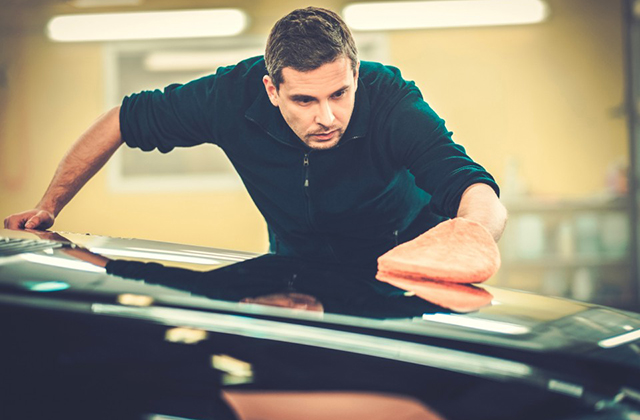You know car paint protection Sydney application is not harmful for your car rather makes your car live longer. As a vehicle owner, you will surely want your car to look new every day. Even the tiny scratches can be an eyesore. A repaint job may be too expensive so it is practical to simply do the repainting. Here are some tips that you can follow from professional painters to make your automobile look new again:
• Scour the areas where there are abrasions with sandpaper. Use the 240-grit variety for minor cuts and the 320-grit when you want to make the affected surface smooth. Deep-seated marks require the 800-grit class of sandpaper.
• Make sure that you wipe away all dust, corrosion and sandpaper residue after the sanding process.
• Rub on the paint primer evenly after cleaning the surface. Use a small brush or matchstick for tiny specks. Do not allow the primer to get mixed with original paint. The next step is to apply the first coating of your paint with care. Let the first coat dry thoroughly before painting the second layer. Follow the same process for the final coat.
• Make it a point to purchase the appropriate colour of your paint. Mix the paint in the bottle and test on a spate surface to find out if the shade matches with the original colour. Most vehicles have a firewall where there is a tiny plate that contains the body and paint code numbers. Bottles of touch-up paint come with brushes so you do not hate to buy a separate applicator.
• When the paint has dried completely, you can put car wax to make your car body glossy once again.
You can manage with manual paint application for small areas. However, if large sections or the entire car body needs to be retouched, it is advisable to make use of spray-painting. This task is quite difficult and should be done in a covered but fully-ventilated corner. As much as possible, the place should be completely free from dust so your paint job will not be spoiled.
It is also practical to hire a professional painter who can carry out the job efficiently. This move will cost you less money and the work can be done faster than if an amateur were to repaint your automobile. You can get in touch with local car suppliers and ask for referrals. Most of these dealers know of cheap painters who can do the work properly within a short duration.
If you want a cheap but decent job that will last a year or so, find out where local car dealers take the used cars they get as trade-ins to have them spiffed up before resale. To save money, you can remove any rust, spot-fill, and paint the small areas yourself, and then have the rest of the job done professionally.
Practice on a piece of scrap metal before you tackle the car, and don’t expect the results to look terrific. Follow these steps:
1. Make sure that the area is rust-free.
If the damage is only a deep scratch or a tiny spot, you may need just a dab of rust arrestor to stop the rust from continuing to form under the new paint.
2. Sand the spot carefully.
Use a small piece of #220 sandpaper to rough up the surface so that the primer adheres properly.
3. Wash the area thoroughly.
Remove any rust arrestor, dust, dirt, filler residue, and wax; then let the area dry completely before you apply the primer. Primer is used to seal a metal surface against rust and to provide a surface for the paint to adhere to. Primer also fills in tiny holes and imperfections in the surface.
If you’re dealing with a surface scratch or a chip that isn’t down to the bare metal, you can probably get away with simply applying the paint. But never apply paint to bare metal or plastic. If a bare spot is exposed, or if the spot is larger than a fraction of an inch, prime the area first.
4. Use a tiny brush or a matchstick to apply the primer sparingly.
You shouldn’t need more than a drop to cover the damaged area. Avoid getting primer on the original paint. If you do, wipe it off immediately. Let the primer dry thoroughly before moving on to the next step.
5. Mix the paint in the touch-up bottle.
Unless your vehicle is very new, the color probably won’t match exactly (which is another reason for keeping the area as small as possible). The paint on new models doesn’t fade as quickly or badly as old paints did.
6. Apply the paint, covering the surface of the spot completely and working inward from the edges.
If you’re painting a scratch or a very small area, you can cut down the brush or use a matchstick or toothpick instead. The paint should be no thicker than the surrounding surface or it will show, run, bubble, or peel off.
7. Wait several days for everything to dry completely.
8. Wax and polish the whole vehicle to blend in the painted area and bring everything to a high gloss.
If you are looking for the best deals on Volkswagen accessories and VW touareg parts, you can visit BSATuning.com.
Article Source: https://EzineArticles.com/expert/John_Z._Alvar/1403925
Article Source: http://EzineArticles.com/7258939
